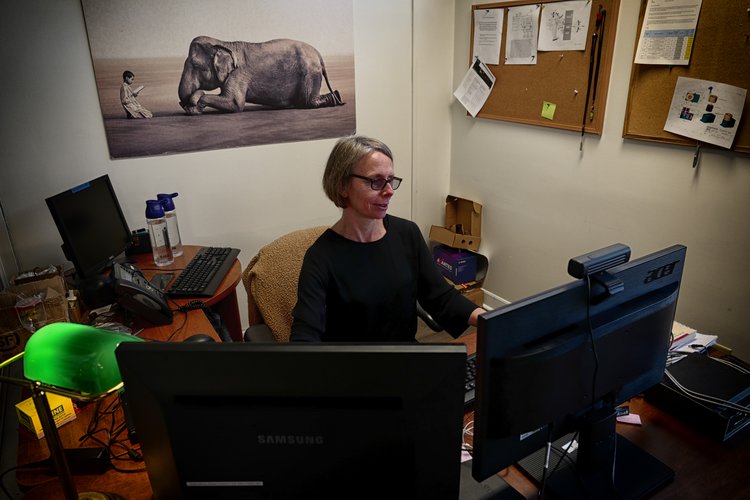The Facts About Uv/vis/nir Uncovered
The Facts About Uv/vis/nir Uncovered
Blog Article
Excitement About Uv/vis/nir
Table of ContentsNot known Details About Circularly Polarized Luminescence Everything about Uv/vis/nirThe Best Guide To Uv/visThe Circularly Polarized Luminescence StatementsThe Ultimate Guide To Circular Dichroism

Although spectrophotometry is most typically used to ultraviolet, noticeable, and infrared radiation, modern-day spectrophotometers can interrogate large swaths of the electromagnetic spectrum, including x-ray, ultraviolet, noticeable, infrared, and/or microwave wavelengths. Spectrophotometry is a tool that depends upon the quantitative analysis of molecules depending upon how much light is soaked up by colored substances.
The Facts About Spectrophotometers Revealed
A spectrophotometer is frequently used for the measurement of transmittance or reflectance of options, transparent or nontransparent solids, such as refined glass, or gases. Although lots of biochemicals are colored, as in, they absorb visible light and for that reason can be measured by colorimetric procedures, even colorless biochemicals can often be transformed to colored substances appropriate for chromogenic color-forming responses to yield compounds ideal for colorimetric analysis.: 65 However, they can also be created to determine the diffusivity on any of the noted light varieties that typically cover around 2002500 nm using various controls and calibrations.
An example of an experiment in which spectrophotometry is utilized is the determination of the equilibrium constant of an option. A particular chain reaction within an option might take place in a forward and reverse instructions, where reactants form products and items break down into reactants. Eventually, this chain reaction will reach a point of balance called an equilibrium point.
Indicators on Uv/vis/nir You Need To Know
The quantity of light that passes through the solution is indicative of the concentration of certain chemicals that do not allow light to travel through. The absorption of light is because of the interaction of light with the electronic and vibrational modes of molecules. Each type of particle has an individual set of energy levels related to the makeup of its chemical bonds and nuclei and therefore will soak up light of specific wavelengths, or energies, resulting in distinct spectral residential or commercial properties.
The usage of spectrophotometers spans different scientific fields, such as physics, materials science, chemistry, biochemistry. circular dichroism, chemical engineering, and molecular biology. They are extensively utilized in many industries consisting of semiconductors, laser and optical production, printing and forensic assessment, in addition to in labs for the study of chemical compounds. Spectrophotometry is often utilized in measurements of enzyme activities, decisions of protein concentrations, determinations of enzymatic kinetic constants, and measurements of ligand binding reactions.: 65 Ultimately, a spectrophotometer is able to figure out, depending on the control or calibration, what compounds are present in a target and exactly how much through estimations of observed wavelengths.
This would come as a service to the previously produced spectrophotometers which were unable to soak up the ultraviolet correctly.
Some Known Details About Circularly Polarized Luminescence
It would be found that this did not provide satisfactory results, therefore in Model B, there was a shift from a glass to a quartz prism which permitted much better absorbance outcomes - spectrophotometers (https://www.startus.cc/company/olis-clarity). From there, Model C was born with a modification to the wavelength resolution which ended up having three systems of it produced
It was produced from 1941 to 1976 where the rate for it in 1941 was US$723 (far-UV devices were a choice at additional cost). In the words of Nobel chemistry laureate Bruce Merrifield, it was "most likely the most essential instrument ever developed towards the development of bioscience." Once it became stopped in 1976, Hewlett-Packard produced the very first commercially readily available diode-array spectrophotometer in 1979 called the HP 8450A. It irradiates the sample with polychromatic light which the sample absorbs depending upon its properties. Then it is transferred back by grating the photodiode variety which spots the wavelength region of the spectrum. Since then, the production and application of spectrophotometry devices has increased exceptionally and has actually turned into one of the most innovative instruments of our time.

A Biased View of Uv/vis/nir
Historically, spectrophotometers utilize a monochromator containing a diffraction grating to produce the analytical spectrum. The grating can either be movable or repaired. If a single detector, such as a photomultiplier tube or photodiode is utilized, the grating can be scanned stepwise (scanning spectrophotometer) so that the detector can measure the light intensity at each wavelength (which will correspond to each "step").
In such systems, the grating is repaired and the strength of each wavelength of light is determined by a various detector in the variety. When making transmission measurements, the spectrophotometer quantitatively compares the fraction of light that passes through a reference service and a test solution, then digitally compares the intensities of the two signals and computes the percentage of transmission of the sample compared to the reference requirement.

Report this page